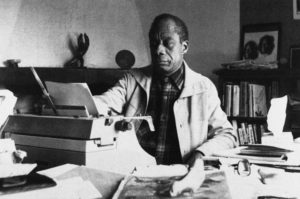The Girls of Atomic City
In 1942, the U.S. government created an instant, secret city in rural Tennessee to process uranium for the world’s first atomic bomb. And Rosie, it turns out, did much more than drive rivets.
“The Girls of Atomic City: The Untold Story of the Women Who Helped Win World War II” A book by Denise Kiernan
In the fall of 1942, residents of a rural swath of east Tennessee began receiving official notifications that their homes and farms were no longer theirs and that they would have to move. The new owner was the U.S. government, which swept up some 59,000 acres of land and in a matter of months built an instant city of 75,000 people so secret it wasn’t even listed on maps.
Its purpose? To process uranium for the world’s first atomic bomb.
The fascinating story of the Manhattan Project has been told often, and often told well — Richard Rhodes’ “The Making of the Atomic Bomb” placing high on that lengthy list. But given the project’s significant and lasting impact, there’s plenty more mining to be done, and Denise Kiernan has found a rich vein in “The Girls of Atomic City.” Rosie, it turns out, did much more than drive rivets.
The secret Tennessee city eventually became modern Oak Ridge, built to support what was known as the Clinton Engineer Works. The sprawling complex was off-limits to anyone without proper ID. It was so vertically segregated in its operations that only a handful of people at the top knew what was really going on, and so swaddled in internal secrecy that to speculate on the purpose of your job invited immediate dismissal and eviction.
|
To see long excerpts from “The Girls of Atomic City” at Google Books, click here. |
As Kiernan demonstrates, because of the shortage of manpower during the war years, much of the work at Oak Ridge was done by women. They were drawn from cities in the Northeast, farms in the South, and small towns in the Midwest, were paid good money for the time and the place, and were crammed into dormitories and trailers; and for the small contingent of African-Americans, there were four-person, 256-square-foot “hutments,” each one “a square plywood box of a structure that had a potbellied stove sitting right smack-dab in the middle.” Houses, impermanent as they were, were reserved for families.
Women may have migrated to Oak Ridge in droves, but they were still hemmed in by the social and racial narrows of the time. Few achieved levels of authority at work; housing policies forbade gender or racial mixing; a household wasn’t a household unless it was led by a man, which meant women with children who arrived ahead of their husbands struggled to find shelter.
Kiernan has amassed a deep reservoir of intimate details of what life was like for women living in the secret city, gleaned from seven years of interviews and research. That is both the book’s strength and its weakness. So many of the women had similar experiences in arriving at Oak Ridge, and on the job, that the anecdotes quickly feel redundant. And Kiernan delves into the lives of so many women that they become a blur of names. A “Principal Cast of Characters” section at the front of the book, helpful as it is, lists nine women of primary focus and another seven “other women of note.” And that doesn’t include any of the men.
The book is further bogged down by the unfortunate decision to drop borderline vernacular into the text, with such phrases as “No, sir, not with the nonstop coming and goings” and the pot-bellied stove “right smack-dab in the middle” mentioned earlier. In another spot, Kiernan paraphrases Dot Jones’ thoughts as: “She missed her mama, though. A good ol’ plump woman with a welcoming lap no matter your age, a soft bosomy shelf that held the answer to any crisis, a pillow for your troubles.”
While apparently meant to make the book more accessible, this overidentification with the characters undermines its authority, as do matters Kiernan leaves unexplored. In one section, she writes of the poor construction of oil-fueled stoves in housing trailers, which “often leaked oil onto the wooden floorboards below. If you weren’t careful, one stray spark and the whole thing could ignite.” But she lets it hang, not reporting whether, indeed, any of the trailers did go up in flames. The anecdote might work in a conversation, but leaving the question open creates ambiguity and diminishes the authority of Kiernan’s narrative.
Elsewhere, though, the tone works nicely in describing the internal spying practiced at Oak Ridge, including “creeps” shadowing women on dates. Loose-lipped workers were summarily fired and banished, and the unexplained absences intimidated others into silence.
In one anecdote, the children of the head of the project’s medical section rummaged through his pockets after he returned from several secret trips and pulled out the matchbooks he brought home. With what one presumes was no small measure of filial pride, the children recited their father’s itinerary to him after dinner one night. Rather than reward their cleverness, the father scooped up the matchbooks and “without uttering a word, threw them into the fireplace. No clues of any kind were ever found in his pockets again.”
The most vexing part of the book is that Kiernan makes the reader act like those children. She provides a broad collection of anecdotes about the experiences of women at Oak Ridge but ultimately leaves it to the reader to figure out what it all means. Fewer anecdotes, and more distillation and analysis, would have made this worthy effort much stronger.
Scott Martelle is the author, most recently, of “Detroit: A Biography.”
©2013, Washington Post Book World Service/Washington Post Writers Group
Your support matters…Independent journalism is under threat and overshadowed by heavily funded mainstream media.
You can help level the playing field. Become a member.
Your tax-deductible contribution keeps us digging beneath the headlines to give you thought-provoking, investigative reporting and analysis that unearths what's really happening- without compromise.
Give today to support our courageous, independent journalists.






You need to be a supporter to comment.
There are currently no responses to this article.
Be the first to respond.